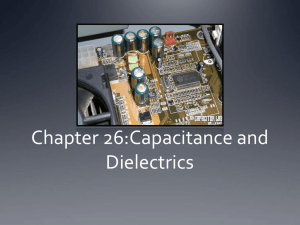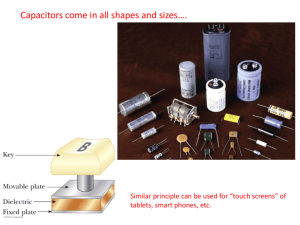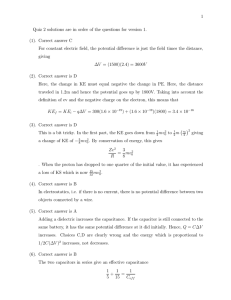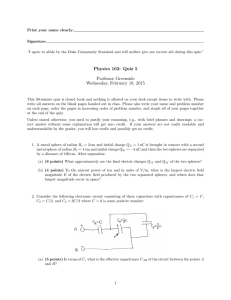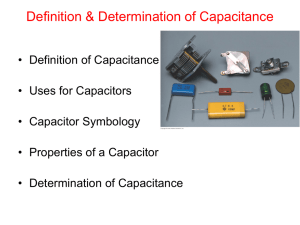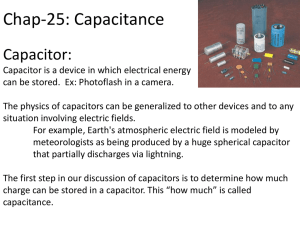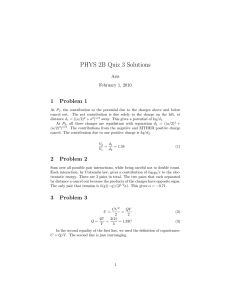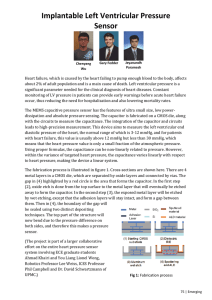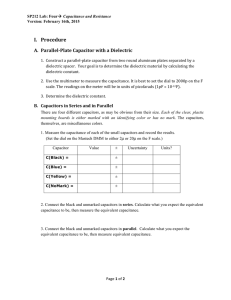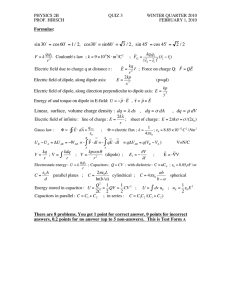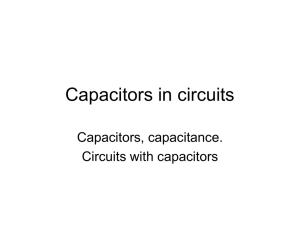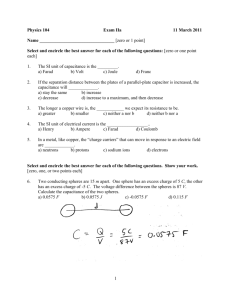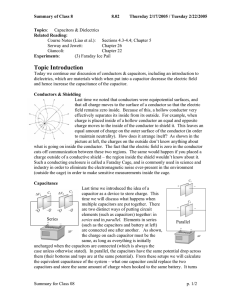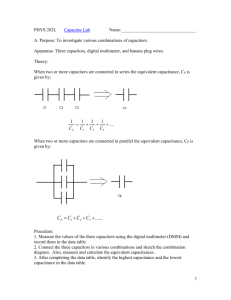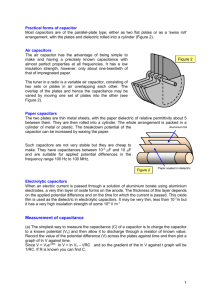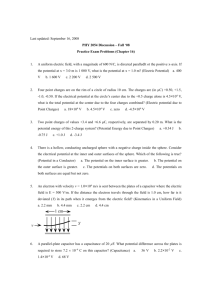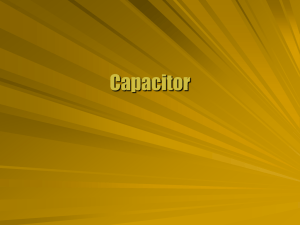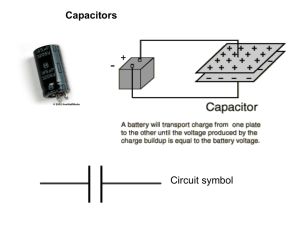Chapter 30. Potential and Field
advertisement
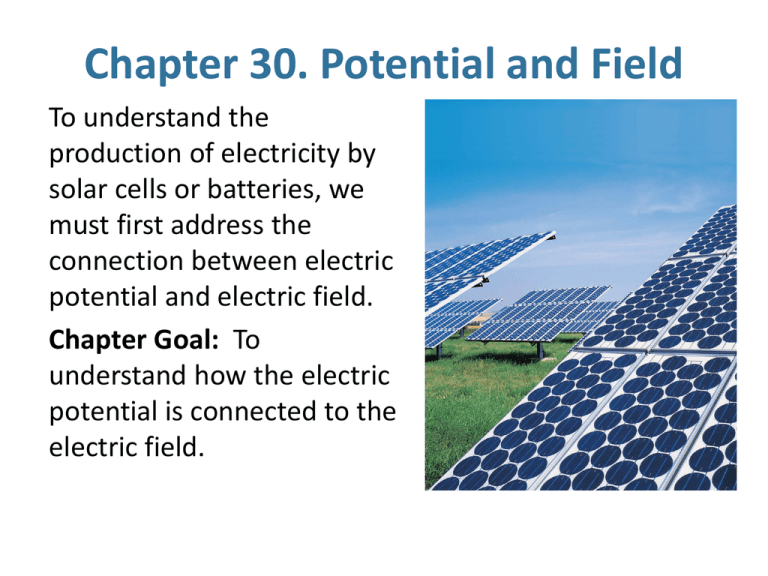
Chapter 30. Potential and Field To understand the production of electricity by solar cells or batteries, we must first address the connection between electric potential and electric field. Chapter Goal: To understand how the electric potential is connected to the electric field. Chapter 30. Potential and Field Topics: • Connecting Potential and Field • Sources of Electric Potential • Finding the Electric Field from the Potential • A Conductor in Electrostatic Equilibrium • Capacitance and Capacitors • The Energy Stored in a Capacitor • Dielectrics Stop to think 30.1 page 916 Stop to think 30.2 page 918 Stop to think 30.3 page 920 Stop to think 30.4 page 922 Stop to think 30.5 page 927 Finding the Potential from the Electric Field The potential difference between two points in space is where s is the position along a line from point i to point f. That is, we can find the potential difference between two points if we know the electric field. We can think of an integral as an area under a curve. Thus a graphical interpretation of the equation above is EXAMPLE 30.2 The potential of a parallel-plate capacitor EXAMPLE 30.2 The potential of a parallel-plate capacitor Batteries and emf The potential difference between the terminals of an ideal battery is ε-emf (electromotive force) In other words, a battery constructed to have an emf of 1.5V creates a 1.5 V potential difference between its positive and negative terminals. The total potential difference of batteries in series is simply the sum of their individual terminal voltages: Finding the Electric Field from the Potential In terms of the potential, the component of the electric field in the s-direction is Now we have reversed Equation 30.3 and have a way to find the electric field from the potential. EXAMPLE 30.4 Finding E from the slope of V QUESTION: Kirchhoff’s Loop Law For any path that starts and ends at the same point Stated in words, the sum of all the potential differences encountered while moving around a loop or closed path is zero. This statement is known as Kirchhoff’s loop law. Capacitance and Capacitors The ratio of the charge Q to the potential difference ΔVC is called the capacitance C: Capacitance is a purely geometric property of two electrodes because it depends only on their surface area and spacing. The SI unit of capacitance is the farad: 1 farad = 1 F = 1 C/V. The charge on the capacitor plates is directly proportional to the potential difference between the plates. Combinations of Capacitors If capacitors C1, C2, C3, … are in parallel, their equivalent capacitance is If capacitors C1, C2, C3, … are in series, their equivalent capacitance is The Energy Stored in a Capacitor • Capacitors are important elements in electric circuits because of their ability to store energy. • The charge on the two plates is ±q and this charge separation establishes a potential difference ΔV = q/C between the two electrodes. • In terms of the capacitor’s potential difference, the potential energy stored in a capacitor is Uc Q 0 qdV Q 0 1 C qdq 1 Q 2 2 C 1 2 C (V ) 2 EXAMPLE 30.9 Storing energy in a capacitor QUESTIONS: qdV The Energy in the Electric Field The energy density of an electric field, such as the one inside a capacitor, is The energy density has units J/m3. Dielectrics • The dielectric constant, like density or specific heat, is a property of a material. • Easily polarized materials have larger dielectric constants than materials not easily polarized. • Vacuum has κ = 1 exactly. • Filling a capacitor with a dielectric increases the capacitance by a factor equal to the dielectric constant. Summary: General Principles


